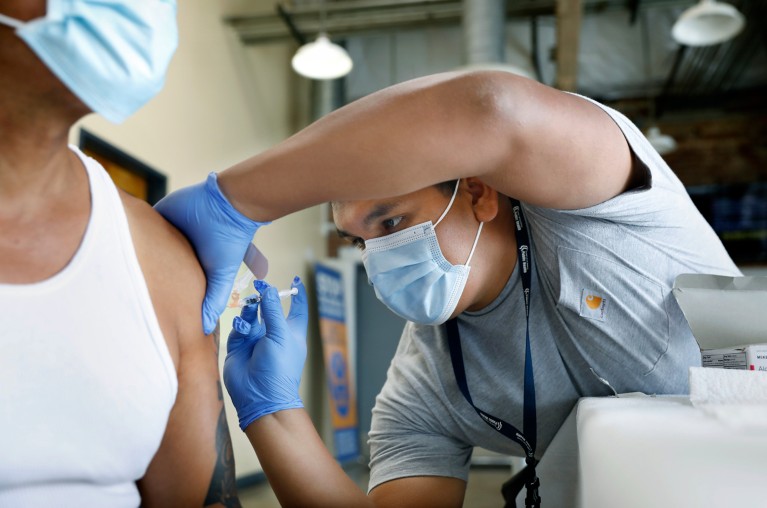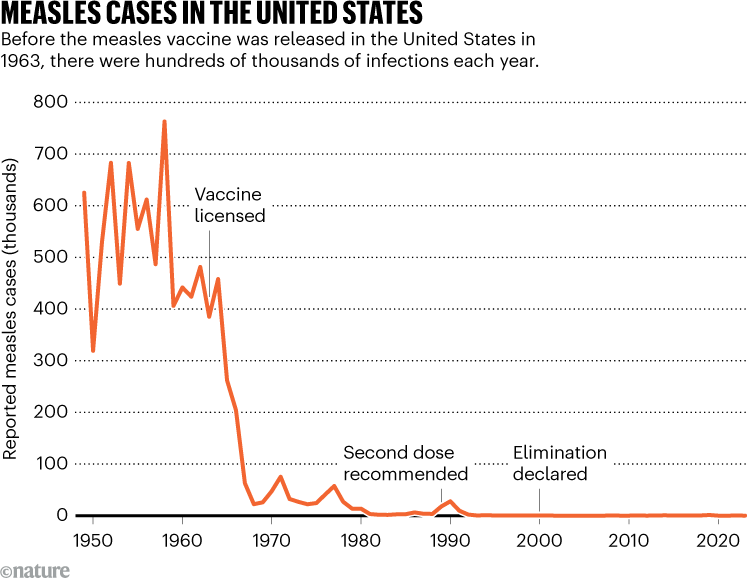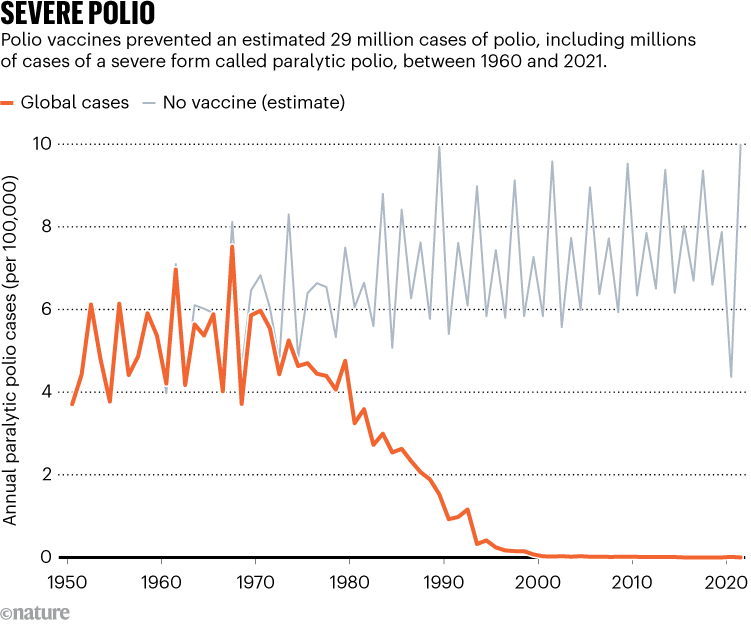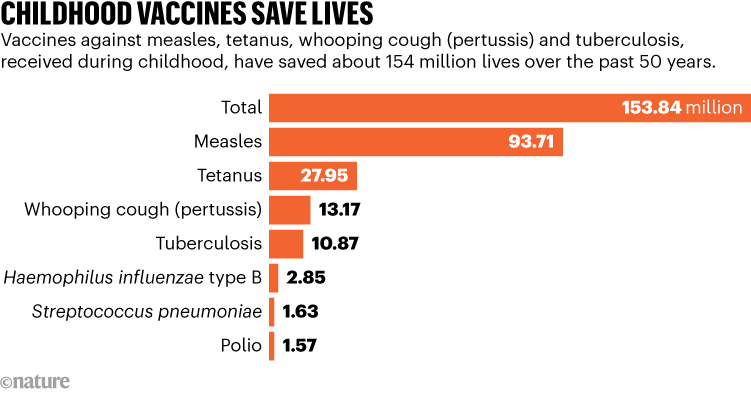
Vaccines have made several deadly diseases a thing of the past.Credit: Christina House/Los Angeles Times/Getty
A second unvaccinated child in Texas has died from measles, amplifying fears that the outbreak there could be wider than reported.
The death, announced on 6 April, also harkens back to a pre-vaccine past that many Americans have forgotten, when hundreds of children died each year of measles.
Generations ago, a child swimming in a community pool could become paralysed by polio. Pregnant individuals who contracted rubella (also called German measles) were at risk of their babies being born deaf, intellectually disabled or stillborn.
Vaccines have granted families in wealthy countries the luxury of forgetting this history, says Anne Schuchat, a former deputy director of the US Centers for Disease Control and Prevention in Atlanta, Georgia. “Many doctors have never seen these diseases because our vaccines have been so successful,” she says.
But public-health specialists fear that vaccination is under threat. Around the world, funds for vaccination drives are in jeopardy as the United States scales back foreign aid, and other countries and public-health organizations juggle competing demands.
Robert F. Kennedy Jr, a prominent anti-vaccine campaigner, has risen to head the US Department of Health and Human Services, which has the power to shape the country’s approach to public health. Misinformation about vaccine safety and efficacy is rampant in the United States and beyond. “It can be very confusing for parents right now with the flood of information they get,” says Schuchat.
To illustrate the impact of vaccines, Nature examines the millions of lives that they have saved.
The most contagious of them all
An alarming outbreak of measles is raging in the United States. It has infected more than 500 people and hospitalized dozens. In addition to the two Texas children, measles is thought to have killed an adult in New Mexico — the first measles deaths in the country in the past decade.

Source: US CDC
Before the introduction of the measles vaccine in 1963, the country saw hundreds of thousands of measles infections each year. Within a decade of the vaccine’s roll-out, infections in the United States plummeted from about 450,000 a year to fewer than 50,000 (see ‘Measles cases in the United States’). Measles kills up to 3 out of every 1,000 infected people.
In 2000, the World Health Organization declared that measles had been eliminated from the United States. But measles is so contagious that at least 95% of a population must be immunized to prevent transmission. US vaccination has dropped to 93% among children starting school, with pockets of the country falling even lower.
If the measles virus circulates in the country for more than a year, the virus will no longer be considered eliminated. “We can’t take for granted the progress that we’ve made,” says Schuchat.
About 55 countries were reporting large measles outbreaks at the end last year, and an outbreak in Vietnam is thought to have infected tens of thousands of people.
A bumpy road to eradication
The world is teetering on the edge of eradicating polio, thanks to a global vaccination campaign that has eliminated the virus in every country except Afghanistan and Pakistan.
The only virus to ever have been eradicated globally is smallpox in 1980. Eradicating polio would be an enormous victory against a virus that once killed or paralysed more than half a million people every year in the middle of the twentieth century, before vaccines were introduced (see ‘Severe polio’).

Source: Badizadegan/The Journal of Infectious Diseases
Polio is not nearly as contagious as the measles, but it is still important to maintain high vaccination rates, says Neil Maniar, a public-health researcher at Northeastern University in Boston, Massachusetts. “If we start to see a consistent decline around the world in polio vaccination rates, all it takes is a couple of outbreaks for infections to start to expand more rapidly,” he says.
Lives saved by childhood vaccinations
In total, childhood vaccinations have saved about 154 million lives over the past 50 years. Most of these are thanks to the measles vaccine, which has saved more lives than vaccines against tetanus, whooping cough (pertussis) and tuberculosis combined (see ‘Childhood vaccines save lives’).

Source: Shattock/The Lancet
That figure doesn’t include lives saved by the eradication of smallpox. Obidimma Ezezika, who studies vaccine implementation at the University of Western Ontario in London, Canada, estimates that the world would lose at least five million people each year to smallpox, had vaccines not been used to stamp out the virus entirely.
Even without the development of new vaccines, just getting existing ones to more people would save another one to two million lives each year, Ezezika estimates.
“As I think about the great public-health success stories of the past century, vaccinations are at the top of that list,” says Maniar.


